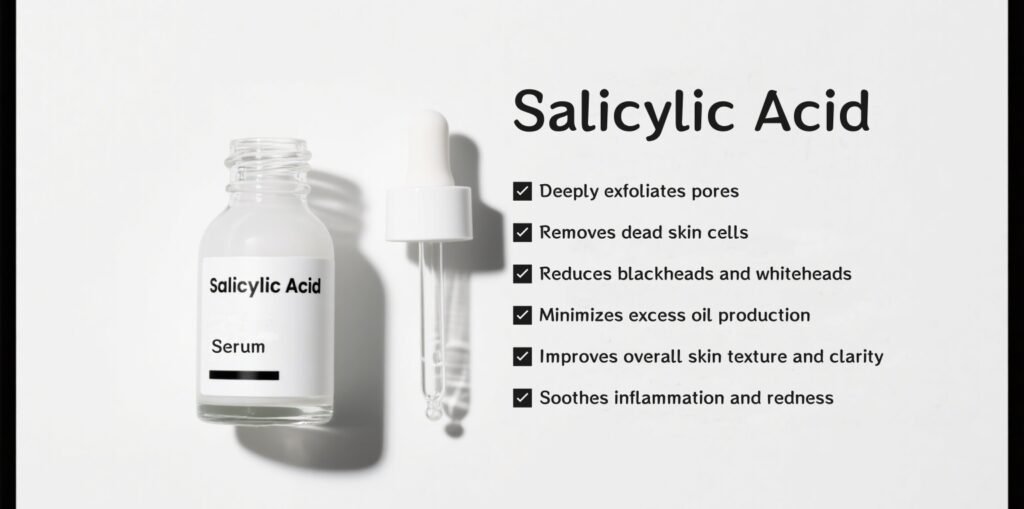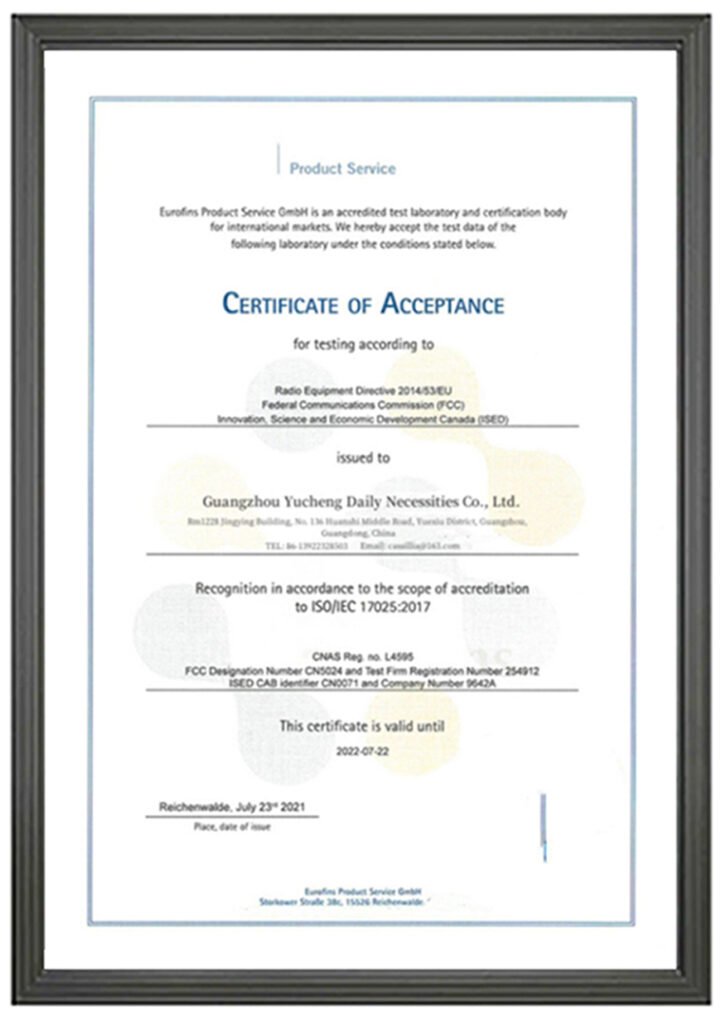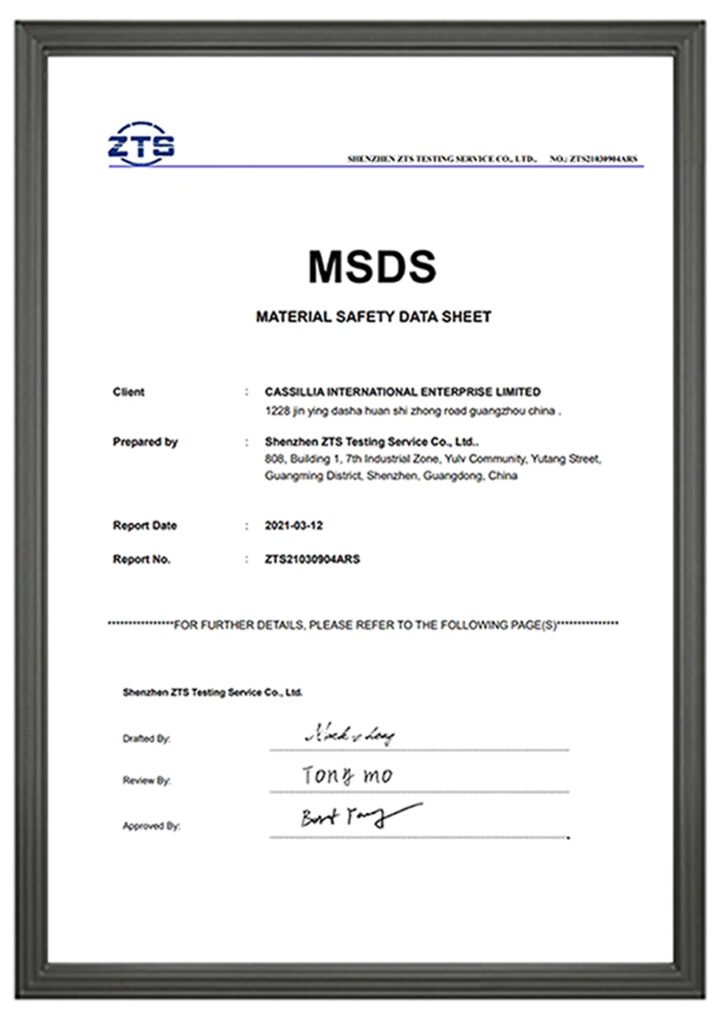How to Use Salicylic Acid on Face
Using salicylic acid on your face can help treat acne, exfoliate dead skin, and unclog pores — but it must be used correctly to avoid irritation.
Salicylic acid is one of the most trusted ingredients in modern skincare, especially for those struggling with acne, blackheads, and clogged pores. At Cassillia, we believe in educating our clients with science-backed skincare guidance to help them choose the right solutions for different skin needs. In this blog, we’ll explain how to use salicylic acid on face, its benefits, precautions, and how to incorporate it into your daily routine.
What is Salicylic Acid?
Salicylic acid is an organic acid naturally present in plants such as willow bark and birch bark, with the chemical name ortho hydroxybenzoic acid. Modern industry can be prepared through chemical synthesis.Salicylic acid is fat soluble and can better penetrate into pores and the stratum corneum, removing accumulated sebum. It is very suitable for skin with acne, blackheads, and enlarged pores.Salicylic acid also has mild anti-inflammatory and antibacterial properties, which help to clear and prevent acne.

The Skincare Effects of Salicylic Acid For Face:
Anti-inflammatory:Salicylic acid has a multi pathway anti-inflammatory effect, which can reduce the activation of immune cells, block inflammation, and alleviate pain.
Antibacterial:Salicylic acid has inhibitory or bactericidal effects on various microorganisms such as bacteria and pathogenic yeast.
Exfoliation of keratin:Salicylic acid not only exfoliates aging keratin and dissolves acne, but also promotes the renewal of epidermal cells, achieving the effect of “skin rejuvenation”.

How to Use Salicylic Acid on Face: Step-by-Step
Whether you’re using a salicylic acid cleanser, toner, serum, or spot treatment, here’s how to apply it correctly and safely:

1. Start with a Gentle Cleanser
Use a mild, fragrance-free face wash to cleanse your skin. Avoid harsh exfoliants before applying salicylic acid to prevent over-irritation.
2. Apply Salicylic Acid Product
Depending on the form:
Cleanser: Massage onto damp skin for 30–60 seconds, then rinse thoroughly.
Toner or Serum: Apply a small amount evenly across your face, avoiding the eye area. Let it absorb completely.
Spot Treatment: Dab a tiny amount on the blemish only.
Tip: Start with low concentrations (0.5%–2%), especially if you’re new to salicylic acid.
3. Moisturize
Follow up with a non-comedogenic moisturizer to restore hydration and protect the skin barrier.
4. Use Sunscreen Daily
Salicylic acid increases sun sensitivity. Always apply a broad-spectrum sunscreen (SPF 30 or above) in the morning.
Applicable Situation:
The onset of acne is related to abnormal sebum secretion, abnormal keratinization of hair follicle sebaceous gland ducts leading to blockage, proliferation of microorganisms such as Propionibacterium acnes, and inflammatory reactions. Salicylic acid can reduce abnormal keratinization of hair follicle openings, and also has a certain inhibitory effect on sebum secretion and Propionibacterium acnes. It is commonly used in mild to moderate acne to reduce acne and inflammation.
Brushing acid can promote the replacement of epidermal cells, thereby accelerating the clearance of pigments in the epidermis. Therefore, it is effective for some pigmentary skin diseases, such as stable stage melasma and acne, which result in post inflammatory pigmentation.
Long term exposure to sunlight can cause skin roughness, fine lines, pigmentation, and capillary dilation, and 30% salicylic acid can also increase skin collagen density.


How Often Should You Use Salicylic Acid?
Oily/acne-prone skin: Once daily or every other day.
Normal to dry skin: 2–3 times per week is usually sufficient.
Not suitable for people undergoing salicylic acid skin :
(1) Pregnant and lactating women.
(2) People with sensitive skin or allergies to salicylic acid.
(3) People with severe infections or skin problems such as dermatitis and eczema in the acid treated area.
(4) Individuals who have recently undergone laser, microneedle, surgery, or other invasive skin treatments and have not fully recovered.
Salicylic acid has a bidirectional keratinization regulating effect, with anti keratinization (keratinization stabilization) and anti keratinization insufficiency effects, which normalize the keratinization process.

Can Salicylic Acid Be Used with Other Ingredients?
Be cautious when layering salicylic acid with the following:
❌ Retinol (may increase irritation)
❌ AHAs like glycolic or lactic acid (can cause over-exfoliation)
✅ Niacinamide (can help calm and hydrate)
✅ Hyaluronic acid (boosts moisture)
Why Choose Cassillia?
At Cassillia, we create custom skincare solutions with trusted active ingredients like salicylic acid, suitable for melanin-rich, oily, and acne-prone skin types. Our products are formulated with natural extracts, clinical efficacy, and export-level quality control, serving B2B clients worldwide with OEM & ODM private label solutions.






Explore our OEM/ODM services and let us help you bring your brand to life — with science, care, and global quality standards.
Ready to experience clearer, smoother skin? Discover how salicylic acid can transform your skincare routine with Cassillia.

Chinese Top Skin Care Supplier
Building 8, Huanya Industrial Park, Taiping Town, Conghua District, Guangzhou, China
Tel: +86 13922328503
E-mail: info@cassillia.com
quick links
Products
- Shower Gel
- Bath Sets
- Body Lotion
- Soap
- Body Oil
- Face Cream
- Face Wash
- Toothpaste
Why CASSILLIA
- OEM/ODM Customization
- Market-Focused
- Reliable Supply Chain
- Competitive Pricing
- One-Stop Solution
- Global Trade Show Experience
- 23 Years of Manufacturing Expertise






